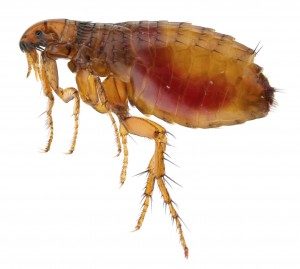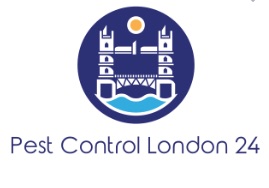How to Identify Fleas in Battersea
Fleas can be elusive pests, but early identification is crucial for effective flea control. Here’s how to identify fleas in Battersea:
1. Bites and Itching: Flea bites are typically small, red, and itchy. If you or your pets are experiencing unexplained itching or small, red bite marks, fleas could be the culprits.
2. Visual Confirmation: Fleas are tiny, reddish-brown insects, about 1-2 mm in size. They are wingless but have powerful hind legs for jumping. You may spot them on your pet’s fur or crawling on carpets, bedding, or furniture.
3. Flea Dirt (Feces): Flea dirt looks like small, dark specks or grains of sand. It is actually flea excrement and consists of dried blood. You might find it on your pet’s skin, in their bedding, or on the floor near their favorite resting spots.
4. Excessive Scratching: If your pets are scratching excessively or seem restless, it could be due to flea infestations. Fleas cause discomfort and irritation, leading to increased scratching.
5. Reddened Skin: Flea bites often cause redness and inflammation on the skin, especially in sensitive areas like the groin, armpits, and around the ankles.
6. Flea Eggs: Flea eggs are tiny, white, and oval-shaped. They are usually found in the fur of your pets or in their bedding.
7. “Hot Spots”: Fleas tend to congregate in certain areas. Check your pet’s neck, back, and tail areas, as well as areas where they sleep and rest.
8. Flea-Related Illness: In severe infestations, pets may develop flea-related illnesses, such as flea allergy dermatitis. If your pet displays symptoms like hair loss, inflamed skin, or unusual behavior, consult a veterinarian.
9. Flea Bites on Humans: Fleas can bite humans, too, often around the ankles or legs. If you notice tiny, itchy bites in clusters, you may have a flea problem.
10. Use a Flea Comb: Run a fine-toothed flea comb through your pet’s fur, especially in their neck and tail regions. If you see tiny, reddish-brown specks on the comb, it’s a sign of fleas.

Early detection is key to preventing a full-blown flea infestation in your Battersea home. If you suspect fleas, contact a professional pest control service like Flea Control Battersea for expert assistance and tailored solutions.
How to Identify Fleas in Battersea: Signs, Prevention, and Treatment
Fleas are tiny, bothersome pests that can infest your home, especially if you have pets. If you suspect you have a flea problem in your Battersea residence, it’s crucial to know how to identify fleas, their signs, and effective prevention and treatment methods.
1. How to Identify Fleas in Battersea:
Identifying fleas is the first step to addressing an infestation. Fleas are small, wingless insects with a reddish-brown color. They have flattened bodies, making it easy for them to move through fur, hair, or fabric. Here’s how to identify fleas:
- Bite Marks: Flea bites can be itchy and appear as small, red, raised bumps. They often appear in clusters, particularly around ankles and lower legs.
- Flea Dirt: Fleas leave behind dark, speck-like droppings called “flea dirt.” This can often be found in your pet’s bedding or on carpets. To differentiate between flea dirt and bedbug feces, remember that flea dirt turns reddish when moistened.
2. Flea Infestation Signs in Battersea:
Flea infestations can escalate quickly. Recognizing the signs early can help prevent a larger problem. Signs of a flea infestation in Battersea include:
- Excessive Scratching: If your pets are constantly scratching, it could be a sign of fleas. Check their fur for these tiny insects.
- Flea Eggs: Flea eggs are oval-shaped and white. You might find them on your pet’s fur or in the carpets, bedding, or furniture around your home.
3. Prevention and Treatment:
Preventing fleas is essential in Battersea, especially if you have pets. Here are some preventative measures and treatment options:
- Pet Flea Prevention: Use flea prevention products recommended by your veterinarian for your pets. These include topical treatments, collars, and oral medications.
- Regular Cleaning: Vacuum your home regularly, especially in areas where your pets spend time. Wash your pet’s bedding and vacuum it thoroughly. This helps remove flea eggs, larvae, and pupae.
- Professional Pest Control: If you have a severe flea infestation, consider professional pest control services in Battersea. Look for local experts who specialize in flea control. They have the knowledge and tools to eliminate fleas effectively.
- Environment Treatment: Using flea sprays or foggers designed for home use can help eradicate fleas from carpets, furniture, and other areas where they might hide.
By being vigilant, identifying fleas early, and taking prompt action, you can effectively deal with a flea problem in your Battersea home. If the infestation persists or worsens, don’t hesitate to seek professional pest control services in Battersea to ensure your home is free from these pesky pests.
Remember, keeping your home and pets flea-free requires ongoing prevention efforts, so stay proactive in safeguarding your Battersea residence.
Conclusion:
Fleas can be a nuisance, but with proper identification, prevention, and treatment, you can keep them at bay in your Battersea home. Regular cleaning, pet flea prevention, and professional pest control services are key to ensuring a flea-free environment for you and your pets.



